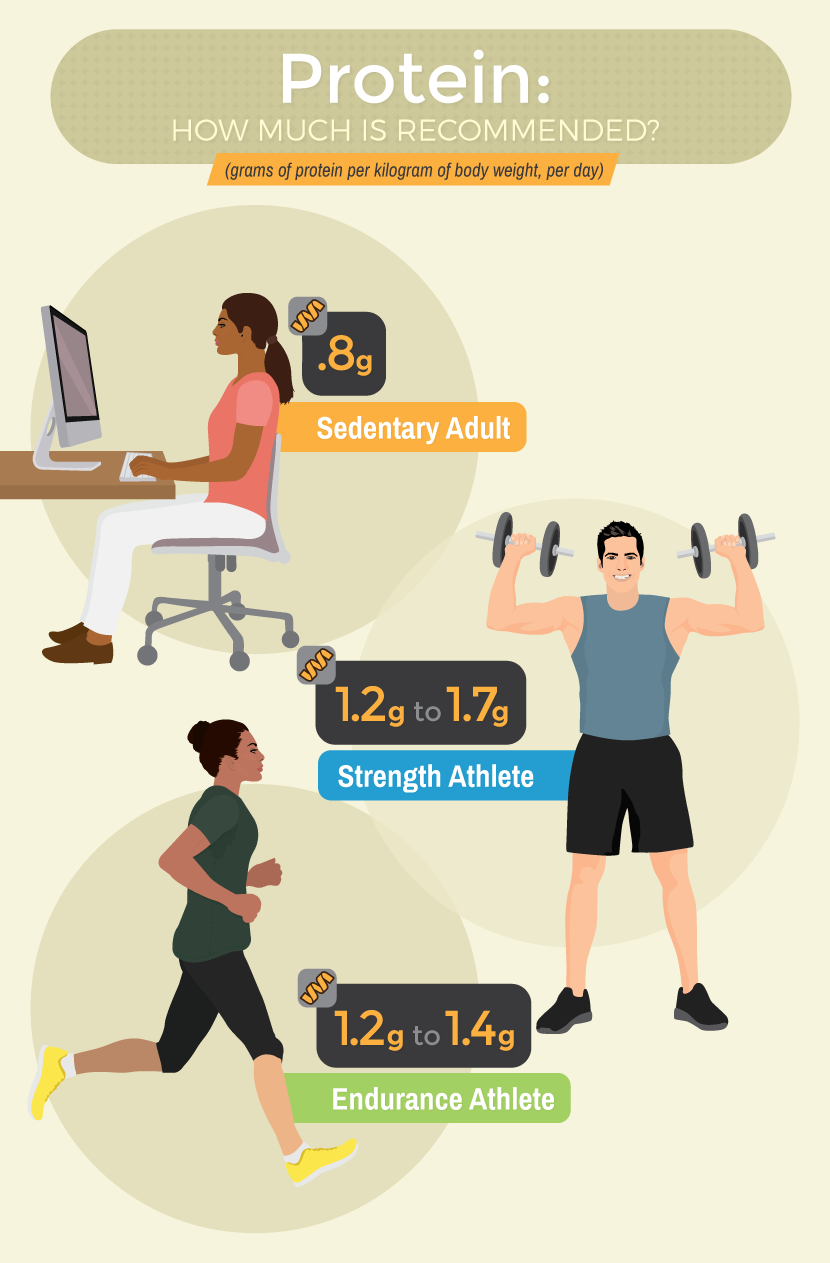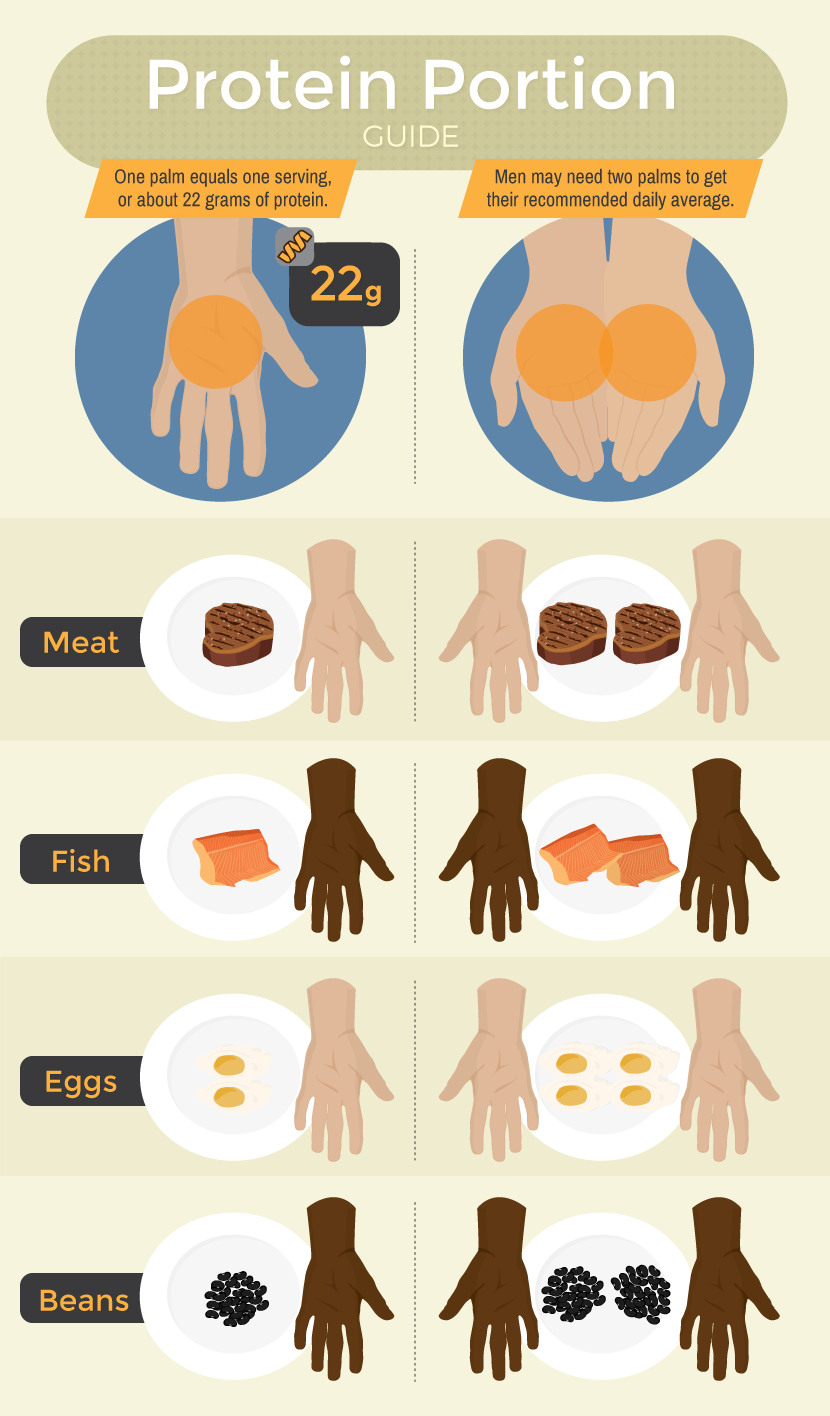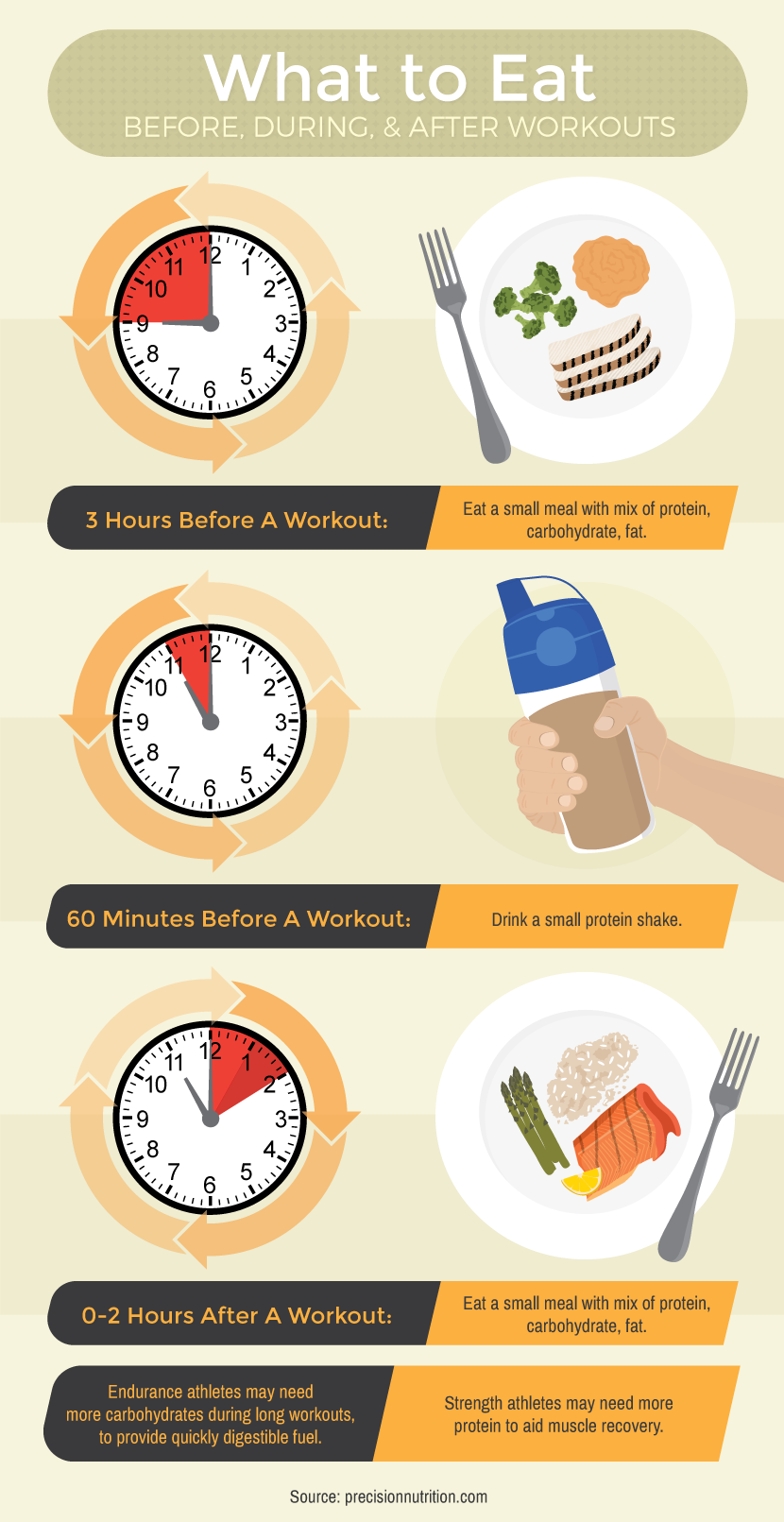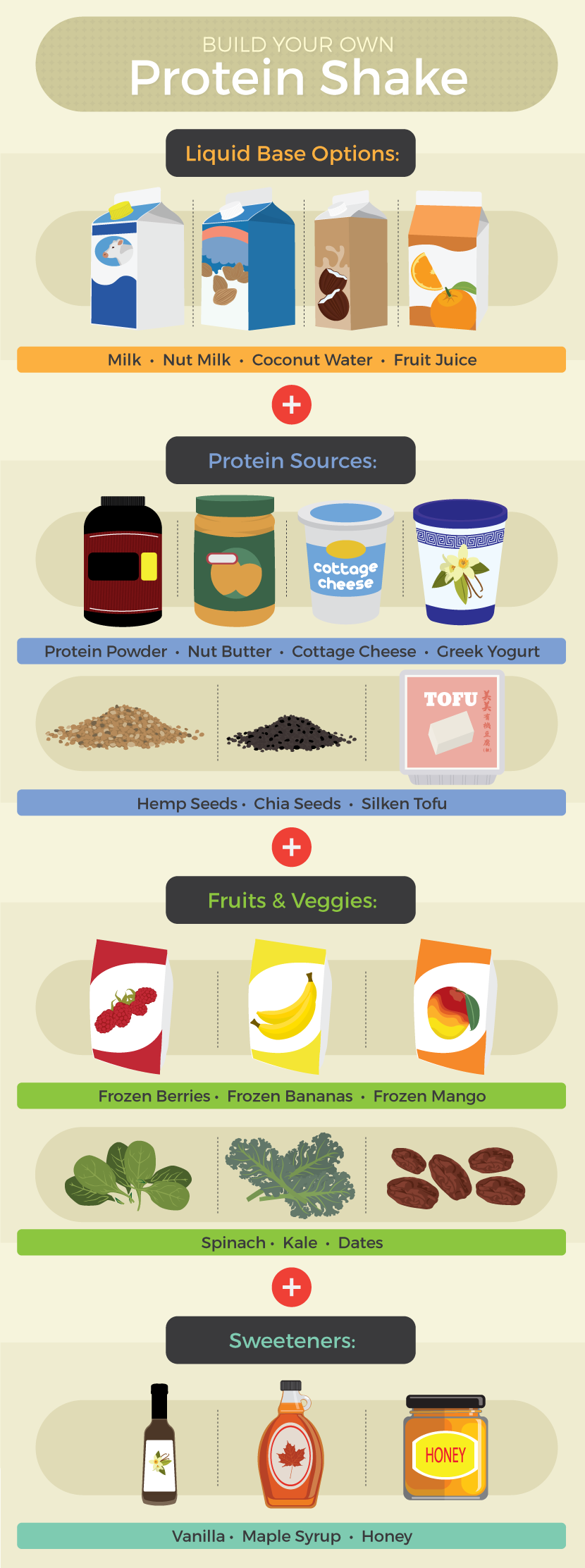Shake Up Your Workout:
Breaking Down Protein Shakes
You put so much effort into getting fit that you’re probably willing to try just about anything in the hope of staying fit and making all that work pay off.
Look around the gym or fitness studio and you’ll probably find a sea of bottles, filled with various shakes, smoothies, and supplements.
Everyone from the muscle-head training for a figure competition to the grandmother who wants to get in shape to play with her grandchildren seems to have a magic formula to sip on between reps or on the walk back out to the real world.
In fact, you might think that, if you don’t follow the trend, you’re somehow missing out on the key to health and wellness, that the shake itself is what would seal your success.
Here are a few quick facts, and then we’ll dive in a bit deeper:
- Nutrition is crucial to your overall fitness. You may have heard the phrase “abs begin in the kitchen,” and to a certain point, that’s true. But defining your goal is the most important part of the equation.
If you’re looking to lose weight, you may have a different set of nutritional guidelines to follow than someone who wants to build muscle mass, perform better in a specific sport, get better endurance for longer workouts, etc.
There is no one-shake-fits-all recipe.
- Calories count. This may seem like an overly simple statement, but the truth is that every addition to your shake or smoothie means that the overall calorie load and nutritional density change.
Dumping in various powders, fruits, nut butters, and more may make the shake more delicious and filling, but you need to weigh that against what it will require you to do in terms of activity.
- The more processed the ingredient is, the more cautious you should be. Regulation of supplements and shakes can be a little looser than for medically prescribed items,
and companies have a vested interest in making delicious and appealing products, so you may not want or need some additives. Sugars or artificial sweeteners are prevalent in many brands, as are artificial flavors, refined soy, and other ingredients companies add to bulk up the powder.
Some supplementation may be very helpful, but keep in mind that real, whole foods provide many nutritional benefits without the drawbacks!
Let’s get into more detail and specifically talk about the what, why, when, and how of protein shakes.

What?
What’s the difference between a shake and a protein shake? Sometimes, not that much. Because protein is found in milk and milk products as well as nuts, nut butters,
and several other additives, even a dessert shake has protein in it!
The biggest difference (outside of marketing) is that protein shakes are designed to support and enhance fitness goals,
and they are meant to be consumed at specific periods or intervals so they help muscle cells recover after tough workouts.
While not required, another hallmark of a protein shake is that it often includes a protein powder or supplement. The sources may include:
- Milk
- Whey
- Casein
- Egg
- Soy
- Rice
- Legumes (peas, nuts, or beans – technically, these may be classified as vegetables, but companies have started to use them as plant-based powders)
What’s especially nice about the options is that there are variations for all needs:
milk and whey protein sources won’t be appropriate for someone with a dairy intolerance, but plant-based proteins may work well.
Someone who avoids soy may prefer a pea or egg protein.
If the goal is just to increase your protein intake, eating a spoonful of almond butter or a couple of hard-boiled eggs will do the trick.
A shake can include other nutrient-rich ingredients like fruits, vegetables, or grains to make a blend that is more filling,
more flavorful, and a more balanced part of the day’s food.

Why?
Protein is a macronutrient, and along with fat and carbohydrate, it’s essential to the human diet.
Protein is made up of amino acids linked together by peptide bonds, and its main goal in the context of fitness is to help build and repair body tissues.
types of amino acids: essential, which the body can’t make on its own, and nonessential, which the body is able to manufacture.
Essential amino acids have to come from food or another source, which is why powders and other supplements are so trendy.
How much protein does a person need? It really depends on the individual and the goals. NASM recommends:
- Sedentary adult: 0.8 grams of protein per kilogram of body weight every day
- Strength athletes: 1.2-1.7 grams of protein per kilogram of body weight every day
- Endurance athletes: 1.2-1.4 grams of protein per kilogram of body weight every day
Outside of a fitness regimen, the recommended daily allowance (RDA) for protein is 0.8 grams per kilogram of body weight.
(You can use this interactive calculator to look at your own needs,
and remember that 1 pound equals 0.453592 kilograms, so you will have to do some conversions!)
Let’s use a 36-year-old woman who is 135 pounds (61.23497 kg), 5’5” tall, and not pregnant. Her RDA for protein is 49 grams a day. (For context, a single gram of protein has 4 calories.)
But what does she want to do? Build muscle mass? Get more powerful? Become a faster runner? Lose weight and decrease her BMI?
What she needs to do to alter her body composition and measure success both depend on her goals.
When?
Timing matters, and for some, it’s crucial. A person managing a disease like diabetes, for example, may have blood sugar concerns that are affected by a workout.
A pregnant woman may want to pay closer attention to what she eats before, during, and after her workout because of its effect on the growing baby.
And for all of us, ensuring that we’re giving our muscles and body the fuel and hydration they need not only to perform but to perform safely is at the heart of the matter.
Typically, athletes consume a protein shake after a workout, especially if the goal is to help repair muscle and let the body absorb and process the shake quickly.
But recent studies show that drinking a shake or eating protein an hour or two before a workout may be as or even more effective! Remember those amino acids we talked about above?
They can, according to many experts, prevent injury and increase your ability to build muscle during a workout.
Getting the nutrients into your system before you work up a sweat and then replenishing with a small snack or shake afterwards may be the perfect 1-2 combo.
Be careful consuming anything closer to a workout, though – it can be hard on your stomach, and if you’re uncomfortable, you won’t be able to do your routine effectively!

How?
I asked some of my registered dietitian and nutritionist friends for some smoothie and shake recipes, and they came up with some delicious ideas.
Notice their focus on real, whole foods and natural protein sources – and when they do recommend supplementing with a powder, they explain which one and why:
Choose My Plate has a great list of foods with their protein amounts, so depending on your own needs, you can add some items to help boost a macronutrient.
And remember: be cautious of calorie overload. A protein shake can quickly go from a few hundred calories to a few thousand and be more like a dessert than a recovery snack.
Your shake should help you reach your goals, not derail them.

So, what’s the take-away message?
Pay attention to what you eat and when, and if a shake or smoothie sounds delicious and refreshing and you can use it as a vehicle for supporting your workout – go for it!
I love having a green smoothie, especially after a really sweaty workout.
I use spinach or kale, a frozen banana, a few dates, mixed berries, almond milk, a little nut butter, a scoop of protein powder, and a dash of cinnamon and enjoy every last sip of the sweet, healthy treat.
But if that doesn’t appeal to you, either find another source of protein that you do love (a spoonful of peanut butter!) or just eat a well-balanced diet.
There’s no magic in a shake, and if you skip it, you aren’t undoing your workout or missing the key to weight loss and fitness.
- http://www.precisionnutrition.com/workout-nutrition-explained
- http://www.choosemyplate.gov/protein-foods
- http://www.ncbi.nlm.nih.gov/pubmed/24299050
- http://www.ncbi.nlm.nih.gov/pubmed/20860817
- http://www.webmd.com/diet/what-eat-before-during-after-exercise?page=2
- http://www.webmd.com/diet/protein-shakes
- http://www.bodybuilding.com/fun/proteinshakebenefits.htm
- http://dailyburn.com/life/health/how-to-use-protein-powder/
- http://dailyburn.com/life/health/best-protein-powder-whey-casein-vegan/
- http://livewell.jillianmichaels.com/protein-shakes-after-working-out-4493.html
- http://breakingmuscle.com/nutrition/pass-the-protein-shake-digging-into-pre-and-post-workout-nutrition
- http://blog.nasm.org/nutrition/power-protein/
- http://blog.nasm.org/nutrition/protein-quality-quantity-and-timing/
- http://blog.nasm.org/nutrition/shake-free-protein-real-food-options/
Embed the article on your site

